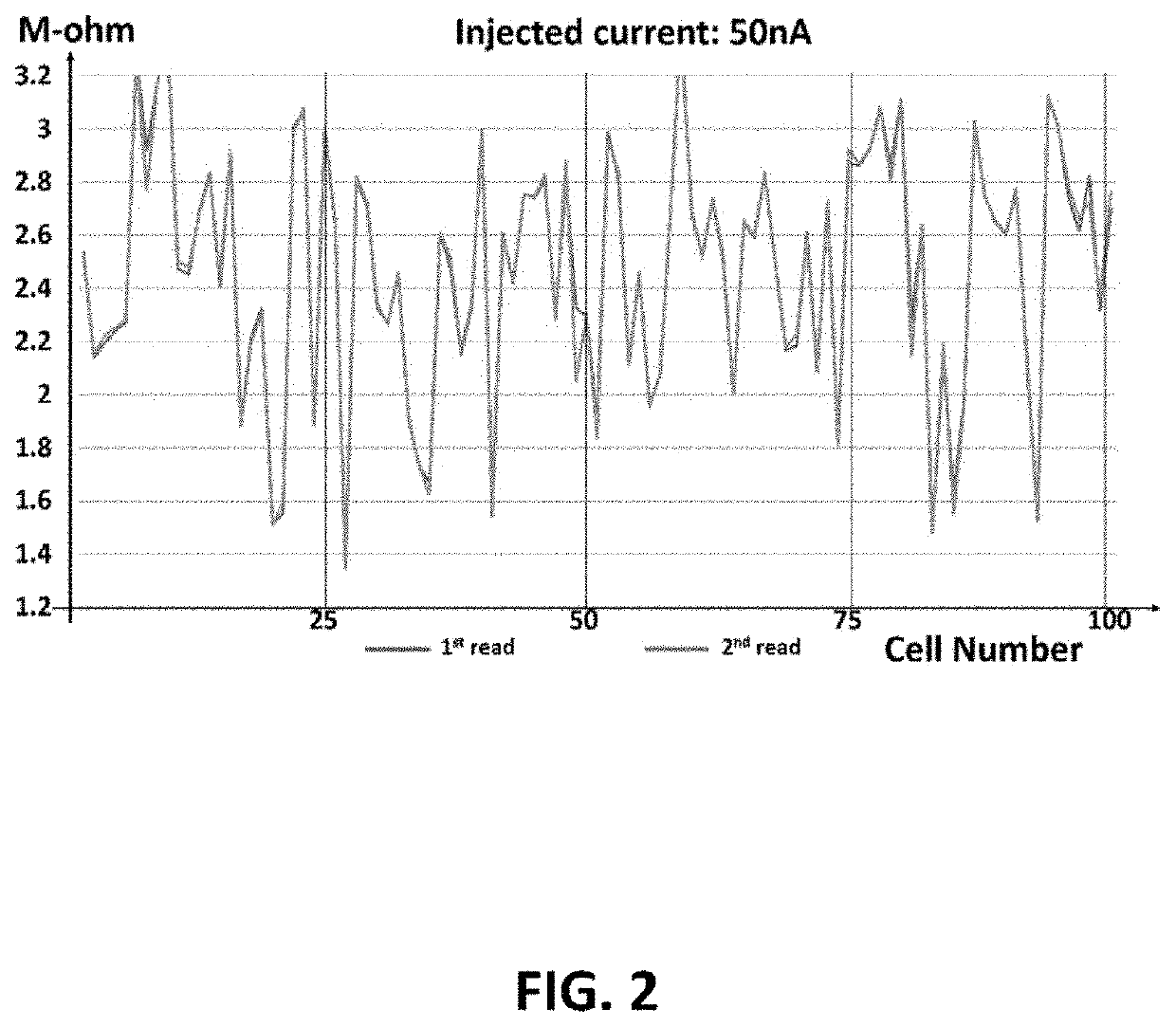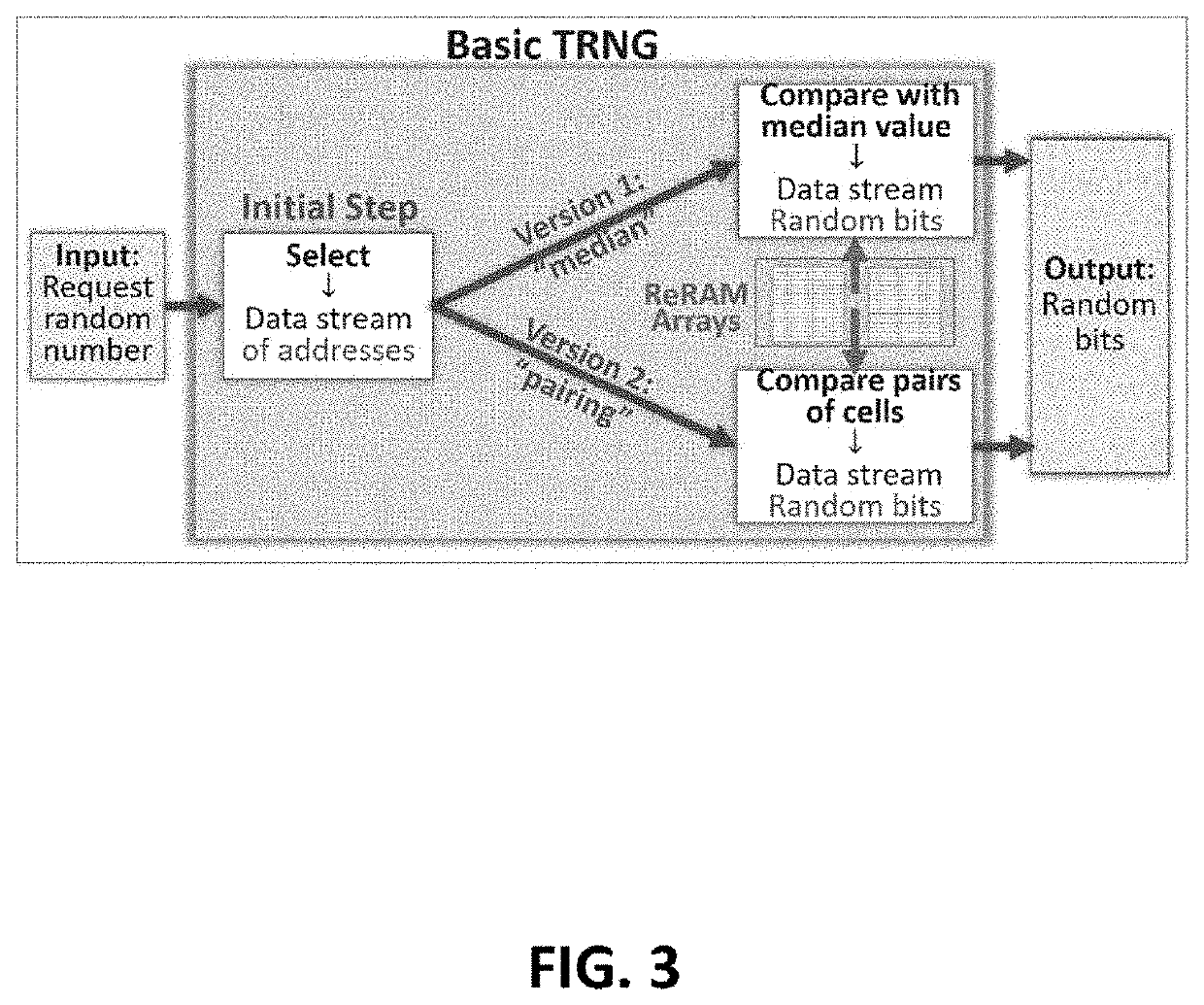True random number generation from pre-formed reram arrays
- Summary
- Abstract
- Description
- Claims
- Application Information
AI Technical Summary
Benefits of technology
Problems solved by technology
Method used
Image
Examples
example 1
[0085]A first stream of random numbers that fails three out of twelve NIST tests was handled in the following way:
[0086]1) Step 1: Group the streams of random bits by chunk of 7 bits.
[0087]2) Step 2: Add the 7 bits of each chunk modulo 2 to get one resulting bit: a 0 or a 1. This operation is equivalent to the XORing of the 7 bits. If the numbers of “1”s is odd, the resulting bit is a “1”; if even, then the resulting bit is a “0”. The level of randomness is enhanced by such operation.
[0088]The results of this process, which are shown in FIG. 11, are excellent. All twelve NIST tests are passed, and the average score is 98.75 / 100 which is well above the threshold. It is also noticeable that the three failed tests above are now passing with the score of 100 / 100. The XORing operations are fast and consume low power, however the latency of such a scheme is by definition seven times slower per bit generated; in order to generate 1,000 bits, 7,000 bits need to be generated from the ReRAM c...
example 2
[0089]The second stream of random numbers that pass all twelve NIST tests with an average score of 98 / 100 was handled in the following way:
[0090]1) Step 1: Group the stream of random bits by chunk of 11 bits.
[0091]2) Step 2: Add each chunk modulo 2 to get one resulting bit: a 0 or a 1. This operation is equivalent to the XORing of the 11 bits. If the numbers of “1”s is odd, the resulting bit is a “1”; if even, then the resulting bit is a “0”. The level of randomness is enhanced as multiple combinations of 11 bits yield the same resulting bits.
[0092]The twelve tests, as shown in FIG. 12, now pass with an average score of 99 / 100 which is even better than what was reported without XORing. Ten of the twelve tests score 99 / 100 or higher which is as good as one can expect considering the length of the data stream generated by the TRNG. However, the 98 / 100 score before XORing is already good enough, and the need to further enhance randomness is marginal.
[0093]The embodiments described abov...
PUM
 Login to View More
Login to View More Abstract
Description
Claims
Application Information
 Login to View More
Login to View More - R&D
- Intellectual Property
- Life Sciences
- Materials
- Tech Scout
- Unparalleled Data Quality
- Higher Quality Content
- 60% Fewer Hallucinations
Browse by: Latest US Patents, China's latest patents, Technical Efficacy Thesaurus, Application Domain, Technology Topic, Popular Technical Reports.
© 2025 PatSnap. All rights reserved.Legal|Privacy policy|Modern Slavery Act Transparency Statement|Sitemap|About US| Contact US: help@patsnap.com



